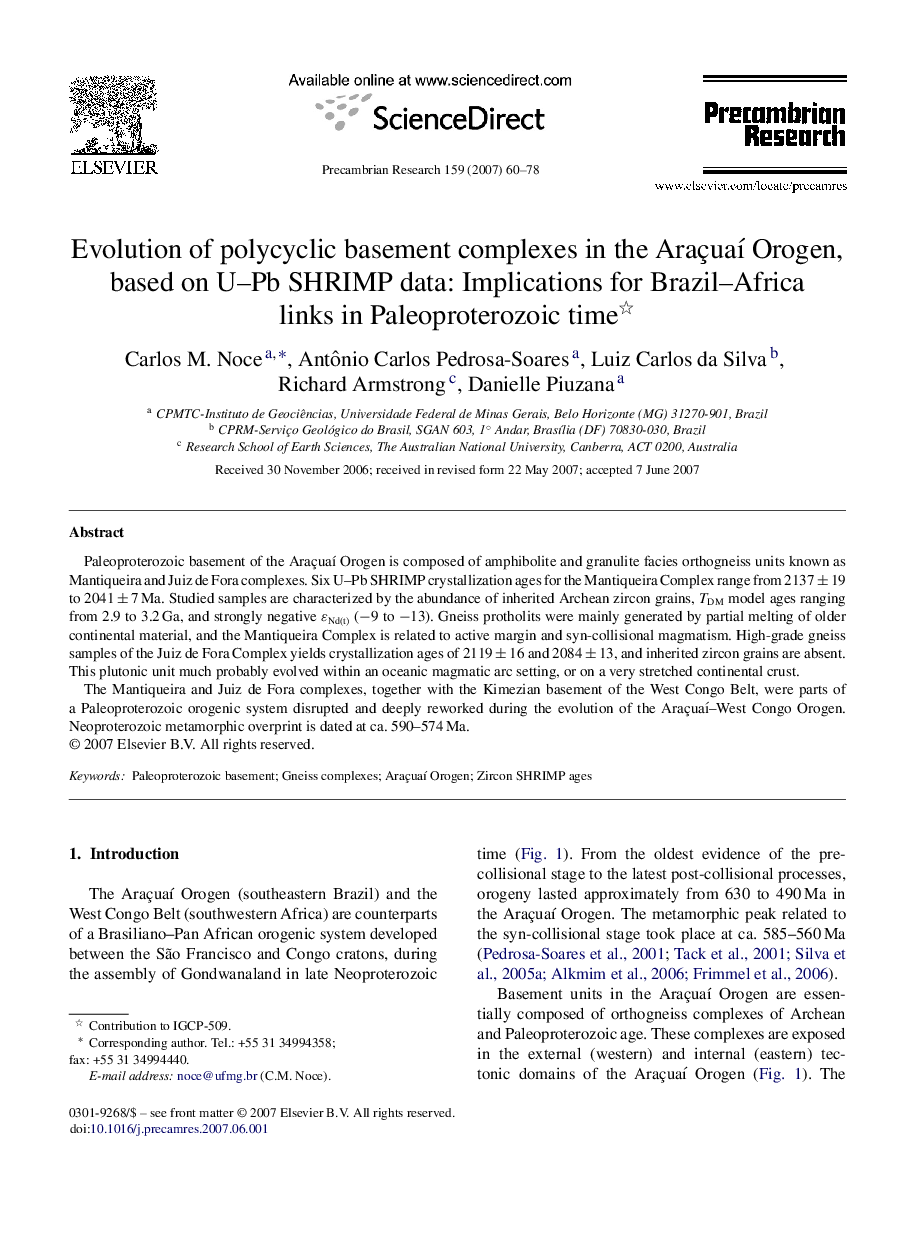| Article ID | Journal | Published Year | Pages | File Type |
|---|---|---|---|---|
| 4724564 | Precambrian Research | 2007 | 19 Pages |
Paleoproterozoic basement of the Araçuaí Orogen is composed of amphibolite and granulite facies orthogneiss units known as Mantiqueira and Juiz de Fora complexes. Six U–Pb SHRIMP crystallization ages for the Mantiqueira Complex range from 2137 ± 19 to 2041 ± 7 Ma. Studied samples are characterized by the abundance of inherited Archean zircon grains, TDM model ages ranging from 2.9 to 3.2 Ga, and strongly negative ɛNd(t) (−9 to −13). Gneiss protholits were mainly generated by partial melting of older continental material, and the Mantiqueira Complex is related to active margin and syn-collisional magmatism. High-grade gneiss samples of the Juiz de Fora Complex yields crystallization ages of 2119 ± 16 and 2084 ± 13, and inherited zircon grains are absent. This plutonic unit much probably evolved within an oceanic magmatic arc setting, or on a very stretched continental crust.The Mantiqueira and Juiz de Fora complexes, together with the Kimezian basement of the West Congo Belt, were parts of a Paleoproterozoic orogenic system disrupted and deeply reworked during the evolution of the Araçuaí–West Congo Orogen. Neoproterozoic metamorphic overprint is dated at ca. 590–574 Ma.
